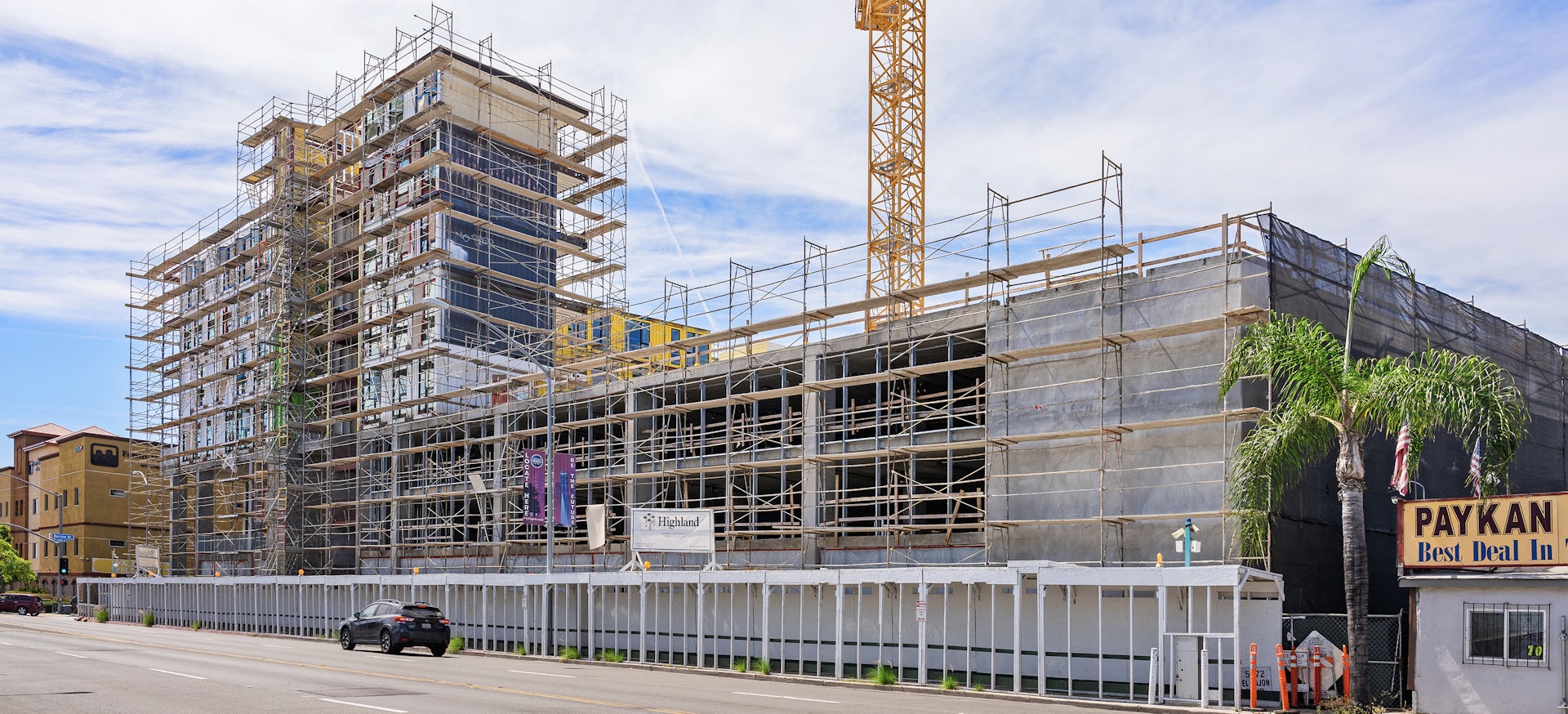People Assisting the Homeless is building its first multistory project with a method that is faster to complete than conventional construction.
By Gary Warth
The following is excerpted from the San Diego Union-Tribune. LPA is the designer of the El Cerrito project.
A project that could become a model for developing housing at record speed is beginning to take shape in the El Cerrito neighborhood of San Diego and is on track to open in December.
With construction of a ground-floor medical clinic and parking garage still underway, crews are placing 21 shipping containers each day on the site at El Cajon Boulevard and 55th Street. By the end of the year, 137 shipping containers will have been converted into 40 housing units for homeless people, plus one for a manager, at a cost of $23.3 million. A planned second phase will add an additional 132 units at a cost of $60 million.
The housing units are being created by People Assisting the Homeless (PATH), an L.A.-based homeless service provider that also operates a shelter, housing and outreach in San Diego. The ground floor will have a new medical clinic for Family Health Centers of San Diego, with two levels of underground parking below the clinic and two parking levels above it. The five stories of housing units are being built above the clinic and garage.
While supply chain shortages and other issues have caused a delay — the project was expected to open this month — the modular housing project still is expected to have shaved about a year off the time it would have taken with conventional construction.
On Monday, San Diego City Councilmember Sean Elo-Rivera and PATH CEO Jennifer Hark Dietz donned hard hats and visited the construction site.
“I’m supportive of the model,” Elo-Rivera said. “I think we need to do more of this.”
Elo-Rivera said innovative ideas should be explored, but too often they are abandoned because they are not considered perfect.
“This is why we’re at where we’re at,” he said about the housing shortage. “We’ve waited too long for a panacea or a silver bullet. It’s not coming.”
The project’s total cost of $23.3 million comes to $568,000 for each unit. In an interview with The San Diego Union-Tribune in May, PATH deputy chief housing officer Anthony Bahamondes said there is a misconception that modular housing can be less expensive than traditional construction because the containers themselves only cost about $32,000 to convert.
But then there are costs for delivery, labor, utilities and other expenses that drive up the final amount, he said.
Elo-Rivera said he was hopeful the cost of modular housing could drop in the future as the relatively new business model develops.
The speed of construction is a trade-off for the high cost.
“By the time we would have been done with the concrete podium, we would have just started our stick framing,” said project manager Steve Kunkel. “Well, guess what? By the time we finished our concrete podium, they already had I’d say 60 percent of the phase one containers shipped, completely packaged and ready to ship.”
As he spoke, a large crane lifted a container from the street and onto the foundation. As the shipping container is lowered, two men guided it down with ropes, slightly resembling a sailing crew working lines on a tall ship. Once on the ground, workers attach two containers to make a studio unit and three to make a one-bedroom.
Each container already is insulated, with drywall in the interior and cupboards, sinks, toilets, a bath and a closet already constructed.
“Basically, we build the box and put everything inside of it,” said Rich Rozycki, CEO of Crate Modular. “When the units get delivered to site, they’re about 90 or 95 percent complete. For the most part, there’s no reason for another trade person to go in and do any work.”
Rozycki said modular construction is becoming more popular because of a lack of labor, rising interest rates and a demand for more housing.
“You kind of have a perfect storm of folks looking to get these done in a more cost-effective manner, but at the end of the day they just want projects online quicker,” he said.
Read the Full Article in the San Diego Union-Tribune.
















